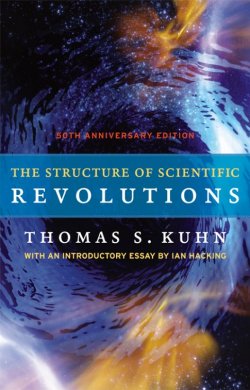
By Hamish Johnston
“Great books are rare. This is one. Read it and you will see.”
That’s the opening paragraph of an introductory essay included in the 50th anniversary edition of Thomas Kuhn’s book The Structure of Scientific Revolutions, which was first published in August 1962 by University of Chicago Press. About 1.4 million copies of the book have been sold and it was recently described by the Observer as “one of the most influential books of the 20th century”.
The introductory essay is written by the Canadian philosopher Ian Hacking, who explores how Kuhn’s ideas have changed our view of the scientific process over the past five decades – and how controversial they were when the book was first published.
Kuhn was an American physicist who was born in 1922 and died in 1996. His career took an important turn in the 1950s when he taught a course at Harvard University on the history of science.
At the time, science was seen as a cumulative process in which knowledge is built up gradually. As such, it should have been possible for Kuhn to look back over the ages and conclude that the ancient Greeks understood X% of mid-20th century physics, while Newton understood Y%.
Instead, he realized that the way he understood physics was fundamentally different from how an ancient Greek philosopher understood physics. Indeed, he found it impossible to compare the science of ancient Greece with that of the mid-20th century – a property he later called “incommensurability”.
Fascinated by these ideas, Kuhn gave up physics and focused first on the history of science and then its philosophy.
Central to Kuhn’s analysis is the idea that our understanding of the universe has evolved in a series of discontinuities in which an intellectual framework (or paradigm) is built up, only to be brought crashing down in a crisis in which it becomes clear that theory is incapable of describing nature. An example familiar to physicists is the failure in the early 20th century of classical mechanics and electromagnetics to explain what we now understand as quantum physics. The two paradigms are incommensurate because quantum concepts such as superposition and entanglement simply do not exist in classical physics.
The intervals between these “paradigm shifts” – a much used and abused phrase popularized by Kuhn – are dubbed as periods of “normal science”, in which scientists work within a paradigm and solve “puzzles” that are thrown up when observation doesn’t quite agree with theory. This is exactly where particle physicists have been for the last 50 years with the Standard Model. Although many hope the Large Hadron Collider (LHC) will deliver observations that will put particle physics into a period of crisis, so far it has discovered exactly what it was expected to discover.
Indeed, it must be the fear of some particle physicists that the LHC will end up being an extremely expensive puzzle solver rather than a shifter of paradigms.



